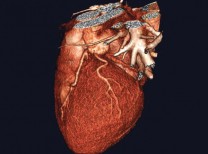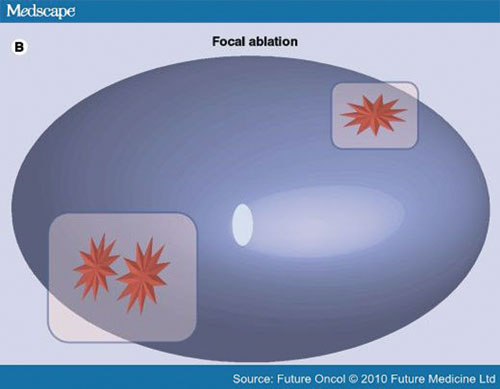Did you know that cardiovascular disease is the leading cause of death in men with prostate cancer? Yes, you read that right.
With traditional prostate cancer screening, a series of tests looks only for evidence of prostate cancer. Those tests either find cancer or they don’t. This outdated, simplistic approach doesn’t assess other potential health risks such as cardiovascular disease, the overall leading killer of both men and women.
Thankfully, how we approach early detection of the deadliest diseases is now changing. Increasingly sophisticated technology lets us provide patients with a holistic picture of their health from head to toe, helping save lives.
A holistic view of both cardiac and cancer risk
Gone are the days that the signs of a ticking time bomb cardiac event are missed during a prostate cancer screening appointment. Precision diagnostics to identify cardiac risk while screening for the deadliest diseases (prostate cancer, breast cancer, lung cancer and neurological disorders like Alzheimer’s disease and dementia) are now available by combining genetic testing with advanced imaging such as a coronary artery CT angiogram or an MRI test.
By doing so, we are able to save 30% of patients who might otherwise die from cardiovascular disease.
This technology provides a detailed picture of the heart and the blood vessels through noninvasive imaging known as computed tomography angiography (CTA). This test helps identify both severe blockages and early plaque build-up in the coronary arteries that may lead to heart problems in the future and provides information to help assess a patient’s risk of having a heart attack.
Precision diagnostics is the future of medicine and allows us to identify a patient’s lifetime risk for heart attack or stroke while determining their risk for cancer and neurological diseases. That way, serious health events can be mitigated by positive lifestyle changes or the benefit of starting early-stage therapies sooner. Precision diagnostics let us put patients on a pathway to optimal health. In short, we put the future of your health in your hands.
Early detection could save your life
Conventional health care is based on a failure model; if one treatment doesn’t work, clinicians try a different treatment, and then another, until something works – wasting crucial time. Regrettably, with the current standard of [prostate] cancer treatment, most cancers are caught at stage 3 or 4, when lives are at risk and more aggressive, invasive treatment is required.
In contrast, by providing a 360-degree view of each patient’s condition and hereditary risks, we can detect cancer, cardiac and neurological diseases early, and pinpoint the most effective, precise treatment path earlier. If cancer is caught in stage 1 or 2, there is a dramatic increase in survival rates and quality of life. Precision diagnostics:
- May prevent 30-50% of cancers when combined with healthy lifestyle choices1
- Increases five-year survival rate for prostate cancer detected early to 99%2-3 (versus 26% late/metastatic)
- Eliminates 50% over-treatment of prostate cancer (focal versus radical) and safely avoids 27% of prostate biopsies4 in men with an elevated screening serum PSA
- Identifies more women for additional screening with MRI and detects three times more cancers than standard mammography alone5-6
- Reduces patients misdiagnosed with Alzheimer’s disease by 25%
Detect and treat prostate cancer in its earliest stages
More than 34,000 men died from prostate cancer last year in the U.S. alone. This is because in most cases, conventional imaging cannot identify the precise location and extent of prostate cancer. Therefore, prostate cancer is often caught and treated too late or is over treated with invasive surgery that carries significant and life-altering side effects for many.
In contrast, we are now able to use precision diagnostics that may detect prostate cancer at stage 1 or 2, when it can be treated with minimally invasive therapies, sooner. This not only provides a longer and better quality of life, but also reduces the impacts of more aggressive, later-stage treatment.
Minimally invasive prostate cancer treatment improves quality of life
For those who do require treatment for prostate cancer, there are now minimally invasive options that have been shown to be effective with reduced side effects compared to traditional prostate removal surgery.
Historically, complete removal of the prostate in a surgery known as radical prostatectomy is the most commonly recommended treatment for prostate cancer. This invasive procedure carries a 50% risk of erectile dysfunction (ED) and a 15% risk of incontinence. To create a less invasive option, Halo Precision Diagnostics pioneered Laser Focal Therapy, a proprietary, non-invasive outpatient MRI-guided therapy that targets and treats prostate cancer tumors while protecting nearby healthy tissue. Following are highlights of a Halo focal therapy clinical study with 12-year follow up data:
- <1% risk of erectile dysfunction and urinary incontinence
- 94% avoided whole gland therapy and associated risks
- Rapid recovery; most patients return to work within days7
Many people don’t realize how significant this type of information is for their own health. However, a recent shift towards precision diagnostics is leading to better prevention, prediction and personalization in health care.
Dr. John Feller is chief medical officer of Halo Precision Diagnostics with clinics throughout the Coachella Valley and nationally. For more information, visit HALODX.com.
References: 1) https://www.who.int/news-room/facts-in-pictures/detail/cancer; 2) Biomarkers and MRI for early PCa detection, https://pubmed.ncbi.nim.nih.gov/32897802; 3) JAMA Netw Open. 2021;4(8):e2119568. doi:10.1001/jamanetworkopen.2021.19568; 4) https://seer.cancer.gov/; 5) N Engl J Med. 2021 Feb 4;384(5):440-451. doi: 10.1056/NEJMoa2005936. Epub 2021 Jan 20. 6) Min Sun Bae, MD, Janice S Sung, MD, Blanca Bernard-Davila, MPH, MS, Elizabeth J Sutton, MD, Christopher E Comstock, MD, Elizabeth A Morris, MD, Survival Outcomes of Screening with Breast MRI in Women at Elevated Risk of Breast Cancer, Journal of Breast Imaging, Volume 2, Issue 1, January/February 2020, Pages 29–35, https://doi.org/10.1093/jbi/wbz083 7 ) Feller J, Greenwood B, Jones W, et al. PD17-01 outpatient trans-rectal MR-guided laser focal therapy phase II clinical trial: Ten-year interim results. Journal of Urology. 2020;203(Supplement 4). doi:10.1097/ju.0000000000000860.01















































Comments (0)